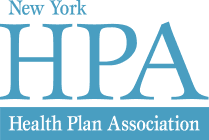Memorandum in Opposition |
| For Immediate Release: April 5, 2022 Re: S.7186-B (Brooks)/A.534-B – AN ACT to amend the general municipal law and the town law, in relation to authorizing fees and charges for emergency medical services |
This legislation, S.7186-b/A.534-B, would require health plans to directly reimburse emergency medical service (EMS) providers. The New York Health Plan Association (HPA) opposes this bill as it would result in higher prices for ambulance services, leading to increased health insurance costs for consumers and employers.
While the state’s General Municipal Law allows other EMS providers to charge for such service, any ambulance service run as part of a fire department is prohibited from doing so. The solution for this problem, however, is not simply requiring insurance companies to reimburse for services.
These fire departments already receive reimbursement for EMS services as part of municipal support for the activities of fire departments. Allowing them to bill insurance companies for services as well will increase costs, which ultimately result in higher premiums for consumers and employers that provide coverage for their employees.
Moreover, the bill would require payments be made at rates for nonparticipating or nonpreferred providers. This requirement undermines the value of plan networks.
Integrated health care networks are the foundation of health care plans. Plan networks are subject to oversight and approval by the Department of Health. Providing coverage through a network increases quality, enhances medical competency and encourages greater coordination and collaboration by providers.
Further, S.7186-B/A.534-B would establish the payment rate as the “usual and customary rate” but does not define usual and customary or who sets that rate. Payment rates for contracted ambulance providers are currently decided in a fair manner by negotiations between health plans and the ambulance company. Depending upon the health plan, non-contracted ambulance companies are paid some form of one of the following:
- the plan’s usual and customary reimbursement rate, which is typically the average rate or charge for identical or similar services in a certain geographic region;
- the average of either the rate charged by providers or the health plan’s contracted rates in that region; or
- a percentage above the Medicare rate.
If the standard for paying out-of-network non-contracted ambulance providers is set at the ambulance company’s usual and customary, this could result in health plans having to pay excessive charges.
For all these reasons, HPA opposes S.7186-B/A.534-B.
